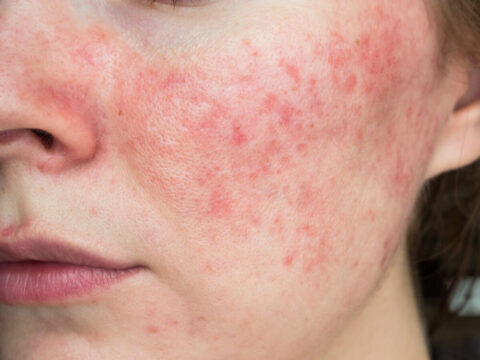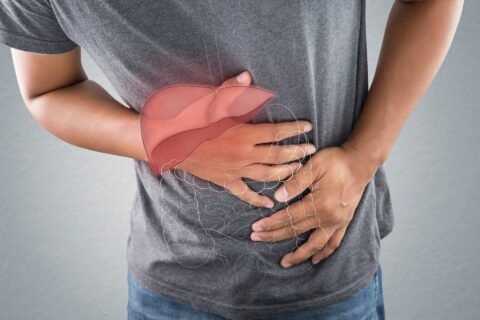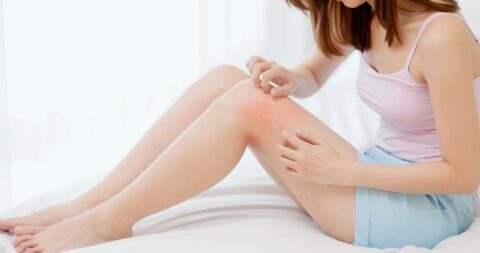One characteristic of spider veins (also called telangiectasia or thread vein) is that they can form almost anywhere on the body. Any blood vessel or capillaries can potentially turn into a spider vein because of a variety of factors, though some places like the saphenous vein or other superficial veins are more likely to form into spider veins or varicose veins.
So what should you do about spider veins on your stomach? Your usual spider vein treatments like sclerotherapy and laser treatment should be enough to work on any broken capillaries, with extra treatments like compression stockings to help support the affected vein. However, it’s also crucial to rule out other conditions that may cause spider vein-like symptoms so you get the right treatment.
Why Spider Veins Form On The Stomach
Spider veins form when blood flow to your veins gets disrupted in some way. Any damaged vein, the difference in blood pressure, disruption in blood circulation, or even age can all make you more prone to developing spider veins.
Normally, spider veins are nothing to worry about aside from being a visual blemish that some people would like to remove. In some rare cases, they can cause mild pain and discomfort, but they shouldn’t be too much of an issue overall. Most patients who have spider veins live well enough with the condition, and removing them isn’t particularly complicated either.
Since the body is covered in veins, spider veins form on the stomach for a variety of reasons. These can range from lifestyle and fashion choices like compression garments to more serious cases like esophageal varices (bulging veins in the tube that connects the esophagus and stomach, usually caused by liver disease or a blood clot) which require different treatment methods.
However, they can also form as a by-product of other unrelated conditions such as pregnancy, since the abdomen experiences plenty of physical shifts while carrying the fetus. Since plenty of reticular veins (deep veins) can be found around the stomach, it’s not uncommon to have some spider veins form around the area for one reason or the other.
When to Go to a Specialist
Spider veins can look scary, but they aren’t supposed to have other symptoms aside from the blue veins that they’re characteristic of. If your spider veins are accompanied by issues like pelvic pain, bleeding, noticeable swelling, or a burning sensation, it’s likely a sign of a much more serious problem that needs to be addressed.
One condition that’s regularly confused with spider veins is spider angioma or spider nevus. The visual symptoms are the same – but a reliable way to tell the two apart is by the color of the visible vein. If it’s blue, it’s most likely a spider vein and needs little to no treatment. But if it’s red (and continues to keep the red coloration over time) it’s most likely spider nevus, which can quickly develop into more serious complications if left unattended.
What makes spider angioma so worrying is that it’s often caused by excessive alcohol consumption, liver disease, obesity, or sun exposure. Given that plenty of veins lead directly to the liver (like the portal vein), any irregularities in that area should always be looked at by a specialist immediately. Ideally, any appearance of any spider veins – especially if there are other symptoms – should be considered as a potentially serious case until cleared by a medical professional.
Overall, thread veins around the stomach shouldn’t be a cause for alarm if they’re all that you feel and appear on your skin, but it doesn’t hurt getting a professional opinion just in case. This can also help clarify if you can have these veins removed, especially if their appearance makes you feel self-conscious.
Read more: Spider Vein Treatment Cost
Treatment Options For Spider Veins On Stomach
For patients who want to remove spider veins from their stomach (and who have been cleared to do so by their doctor), there are two tried-and-tested methods that they can look into for spider vein treatment.
Both of these methods are non-invasive and require little to no effort on the part of the patient, so you can easily go inside the clinic, get the procedure done, then resume your daily activities after a day or two of bed rest.
Sclerotherapy
Sclerotherapy involves injecting a solution into your spider veins that can cause the vein walls to close in on themselves, which seals the vein and minimizes or removes its appearance. It’s a popular option for clusters of spider veins since the solution used in the procedure can travel down them more efficiently.
Laser treatment
By using a specific laser to heat up the veins under your skin, this procedure causes any spider veins to clot and close, which removes any visible veins from the affected area. This is the preferred option when sclerotherapy isn’t an option (for example, if the spider veins are next to an artery) but can also be used as the first method of treatment.
While other treatment options for spider veins exist, these two are the ones you’re most likely to get recommended for by your specialist. Keep in mind that both of these procedures can only be done in medical clinics and not in places like medical spas and salons since they require the right equipment and experience for the procedure to be successful.
Learn more: Getting Laser Treatment for Spider Veins on Face
Effective Spider Vein and Varicose Vein Treatment With The Vein Center Doctor
Thread veins on the stomach are usually no cause for alarm, especially if they don’t come with other symptoms that cause pain or discomfort. But it’s also important to make sure the problem isn’t just visible veins: varicose abdominal veins, pelvic congestion syndrome, or deep vein thrombosis can all occur with spider vein-like symptoms but require more immediate treatment. If you have spider veins on your stomach, the best course of action is to get them checked as soon as possible.
The Vein Center Doctor has extensive experience in helping our patients with different vein-related conditions from chronic venous insufficiency to improper blood flow and blood circulation. By using the latest treatments like radiofrequency ablation, laser treatment, and foam sclerotherapy, we’re able to remove any spider vein and varicose vein with long-term results. No matter your vein disease or vein problem, we can help.
If you want to learn more about managing a swollen vein at home or need advice from a vein specialist, contact us today.







